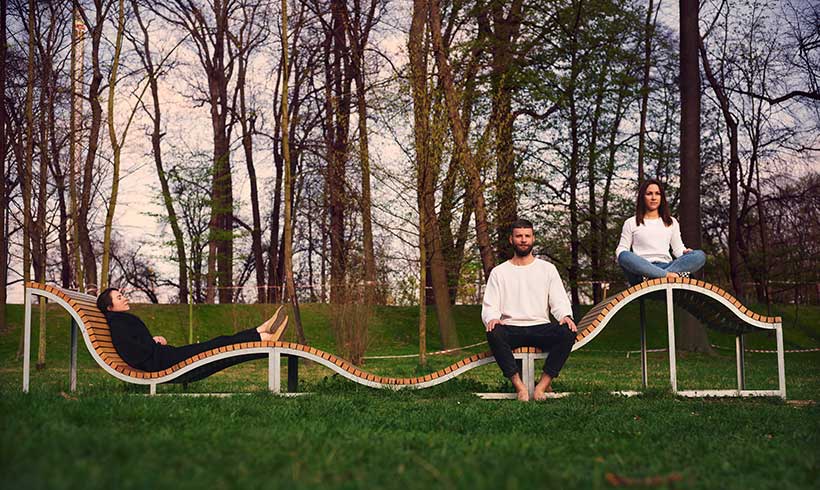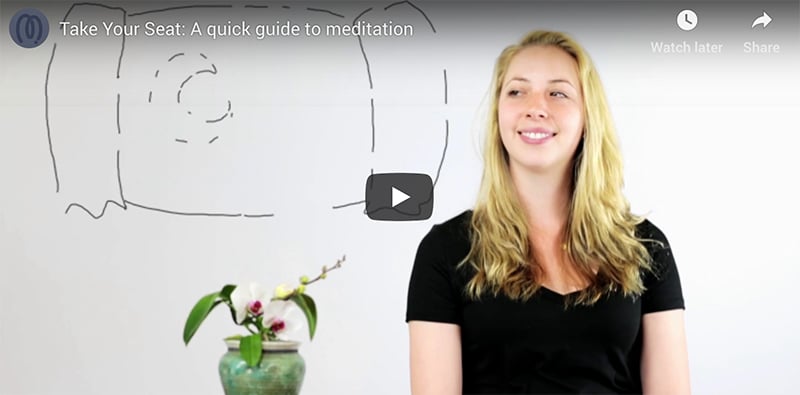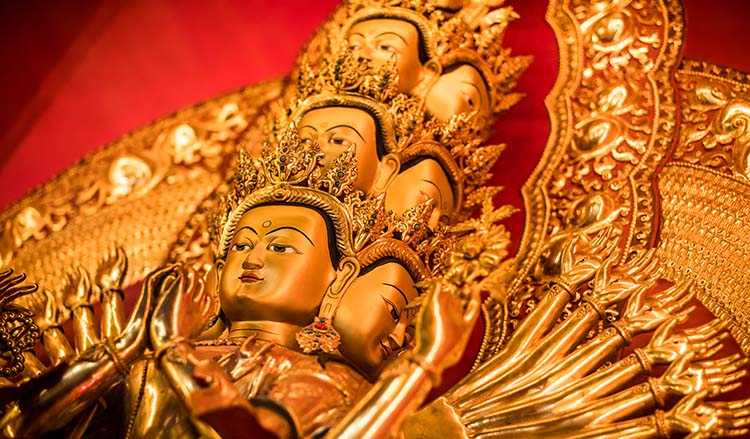Different Types of Meditation Poses and Postures
Category: Meditation Posture

Important Meditation Posture Pointers
When you settle down for a meditation session, it’s important to find a comfortable seated position and maintain good posture. A variety of meditation poses are suitable and you’re sure to find one that’s a good fit. The key element of good posture is a straight back.
Meditation poses shouldn’t be complicated for beginners. In fact, there are only 4 main points to consider:
-
- Comfort
While a little discomfort is nothing to worry about and may be integrated into your practice (it may even help you battle drowsiness!), when practicing mindfulness you should not have to deal with extreme physical pain. Shift if you need to: meditation and self-inflicted suffering don’t jibe. - Relaxation
During meditation, your shoulder, neck, face and jaw muscles should be relaxed. If you’re seated, your arms should rest naturally at your sides with your hands resting palms down on your thighs or together in the meditation posture in or above your lap. If you’re seated on the ground but your knees aren’t touching the floor, try using cushions to raise your hips so they are higher than your knees. You can also place cushions under your knees to reduce strain. If sitting on a chair, it’s preferable for the hips to be slightly higher than the knees. Comfort and relaxation are essential to well-being during meditation. - Alignment
A straight back, whenever possible, is arguably the most important thing to bear in mind when searching for your perfect posture. The entire body needs to be aligned during meditation. Maintain your body in an upright, dignified position. This means no hunching forward and no leaning back – sit up in a straight, comfortable position while keeping your chin slightly tucked in. - Stillness
Whether you’re practicing while sitting, standing, walking or lying down, it’s important to maintain physical stability. Try achieving a sense of balance by gently rocking your body forward, backward and sideways till you find the equilibrium of your meditation posture. Then you should make a conscious effort to sit still during the entire meditation session. Preferably, during mindfulness and awareness meditation, your eyes should be open, your gaze directed downward. If you need to change positions because of discomfort or numbness, try to maintain stillness in movement and shift mindfully.
- Comfort
Check out our Beginner’s Guide to Meditation for a primer on how to start practicing meditation.
4 Types of Meditation Poses
Among the different meditation poses you could try, here are the most popular:
- Seated on a chair
This is one of the best meditation poses for beginners and people who aren’t “yoga-body limber.” Sitting on a chair is not only comfortable for first-timers but it also helps meditators maintain an aligned spine. If done mindfully, sitting on a chair can be as effective as other meditation poses. Use a straight-backed chair and sit towards the edge to ensure that you aren’t leaning against the back of the chair. If you need a cushion between your lower back and the chair or on the chair seat that’s fine. Your feet should be firmly placed on the floor about a foot or so apart. The goal is to sustain your practice with a relaxed position where you are upright and aware. - The quarter/half/full lotus
The lotus is certainly one of the most effective seated meditation postures. There are basically three types of lotus meditation postures: the quarter lotus, the half lotus and the full lotus.The quarter lotus position is relatively simple. While sitting on a cushion, pillow or mat, you “cross” your legs by placing the right foot on the left calf. Make sure your knees are lower than your hips.The half lotus takes the quarter lotus a step further. Here again, the left foot is close to the pelvis but the right foot is closer to the trunk than with the quarter lotus and rests on the left thigh.The full lotus is quite challenging until you get the hang of it – which may or may not happen depending on how supple you are. You start with your right foot on your left thigh and then bring your left foot up to your right thigh. It takes some getting used to, but meditators and yoga buffs who are comfortable with this posture find that it naturally supports their alignment and meditation. - The Burmese Position
Among the many different meditation poses, the Burmese position stands out because of its accessibility. It especially suits individuals who can’t sit in a cross-legged position but would like to practice on the floor or a mat. Sit with the left leg tucked in and the right leg just in front of it. If possible, let the tops of your feet lie flat on the floor. Use a cushion if it’s easier. This ensures that you can remain comfortable in this relaxed meditation pose, also known as the “easy pose.” - The Seiza Pose
This meditation posture also serves as a tried-and-true alternative for those who would rather not cross their legs in any of the lotus positions. In the seiza, you kneel on a mat, with a cushion or meditation bench under the buttocks supporting your weight. You could also use yoga props. This is a great meditation pose for beginners since it’s easy to practice and doesn’t strain your muscles.
All of these postures are appropriate for the many different forms of meditation. It may take time, but eventually you’ll find the posture that really works for you. If you have a teacher or a friend who has been practicing for a while, they should be able to help you identify a suitable sitting style. You might also ask them to correct your posture, as it is very difficult to self-assess, even for accomplished meditators.
Watch this video on how to Take Your Seat for meditation:







